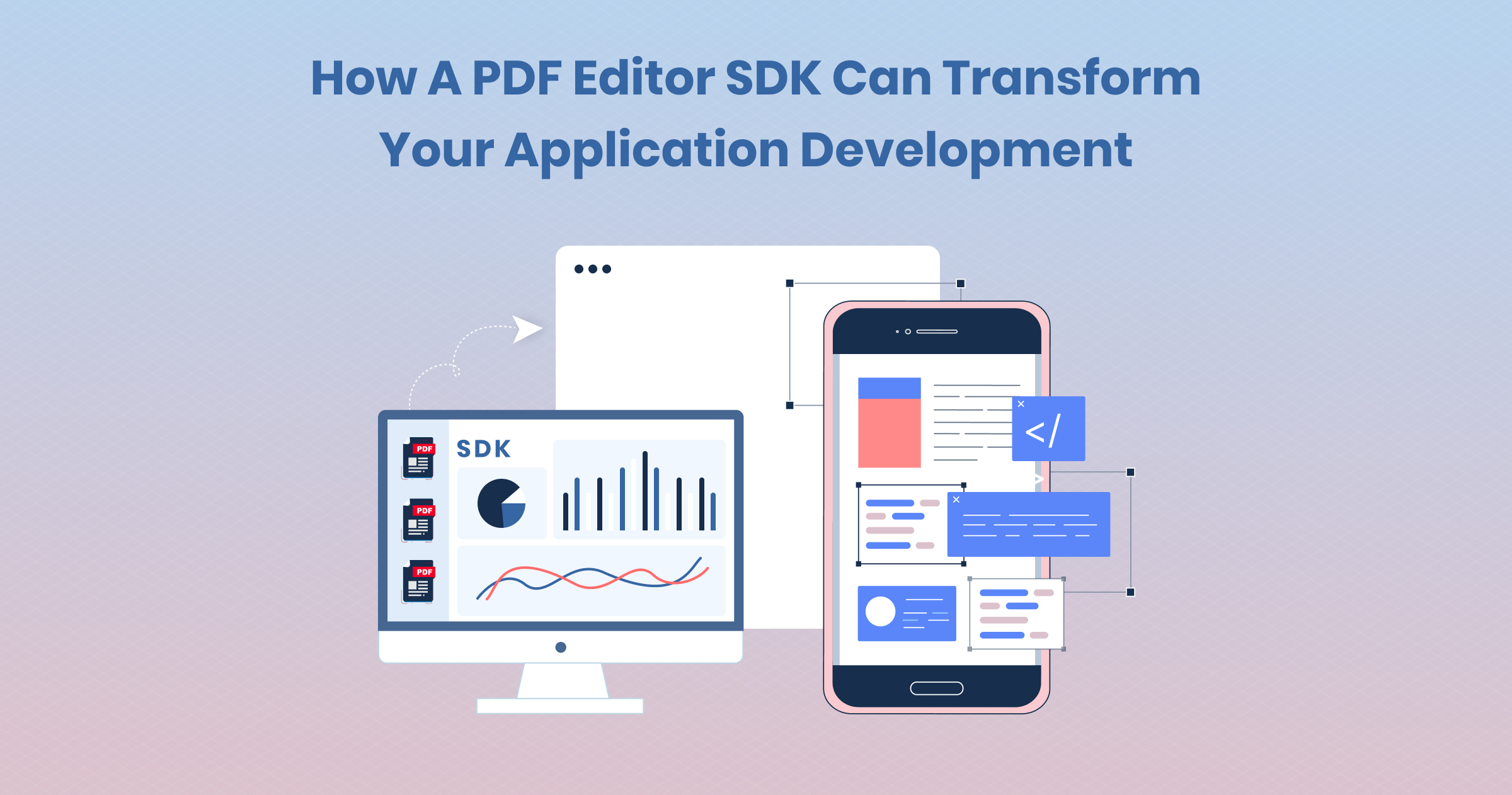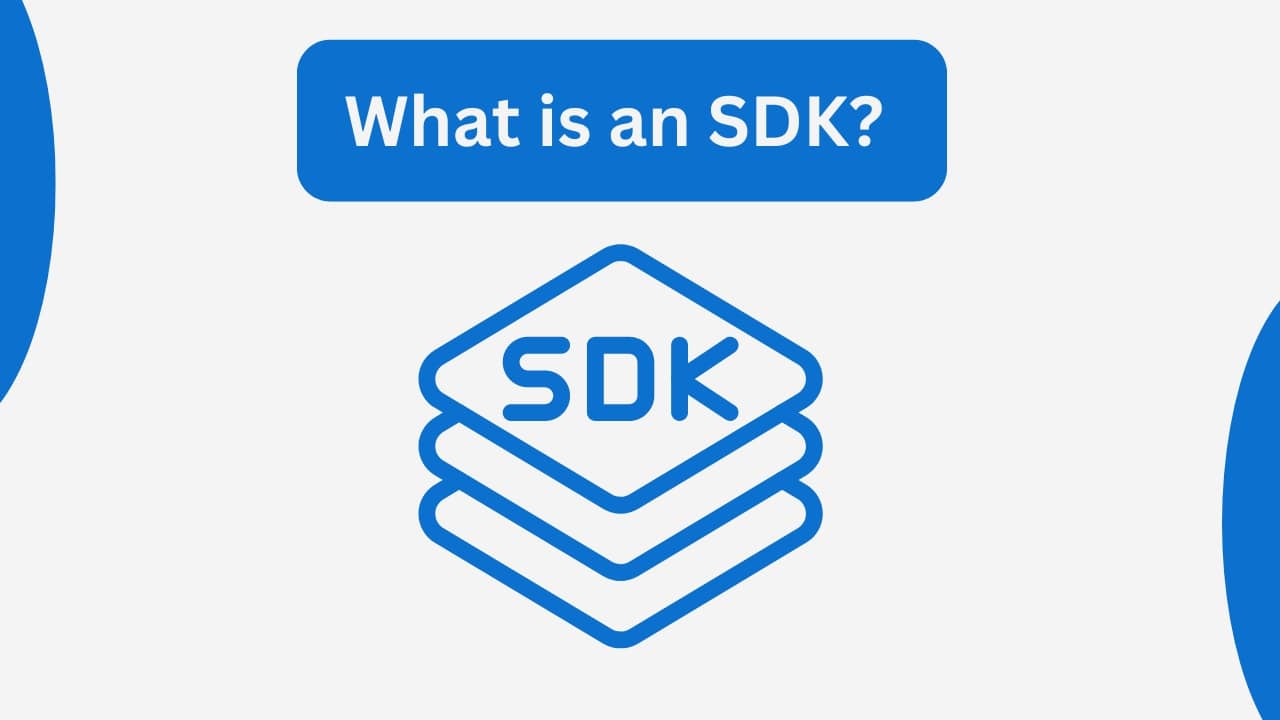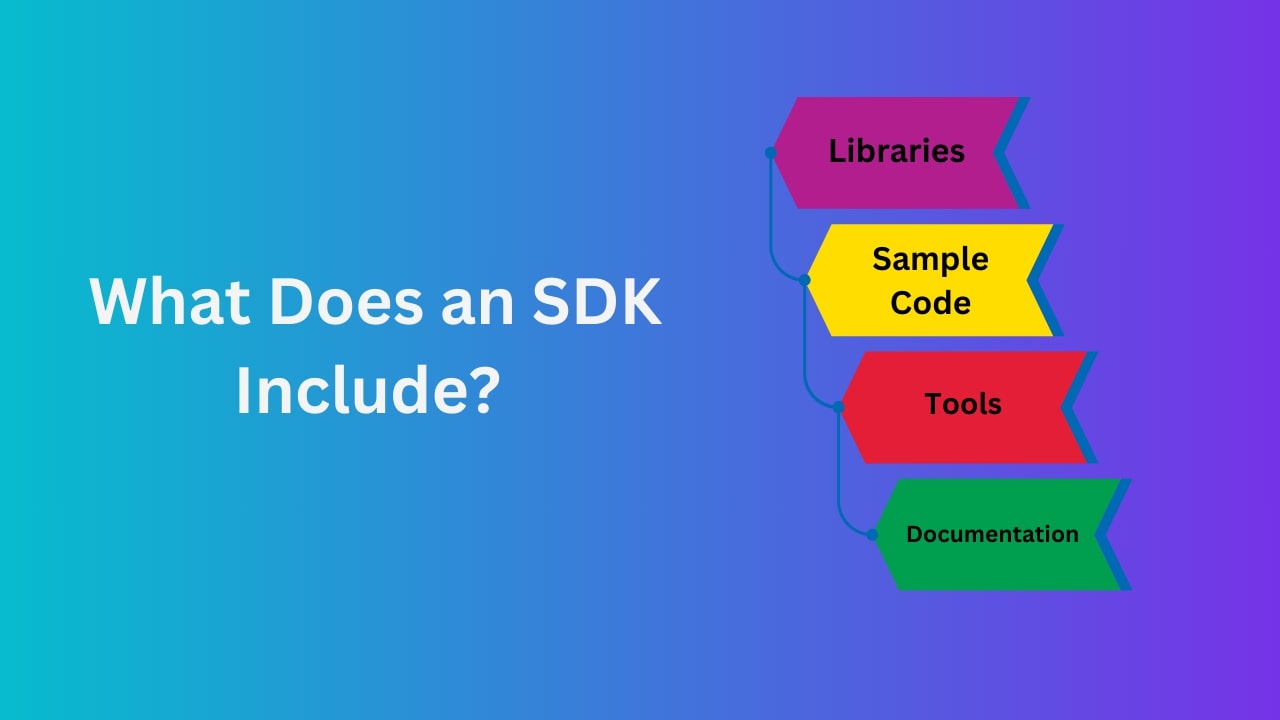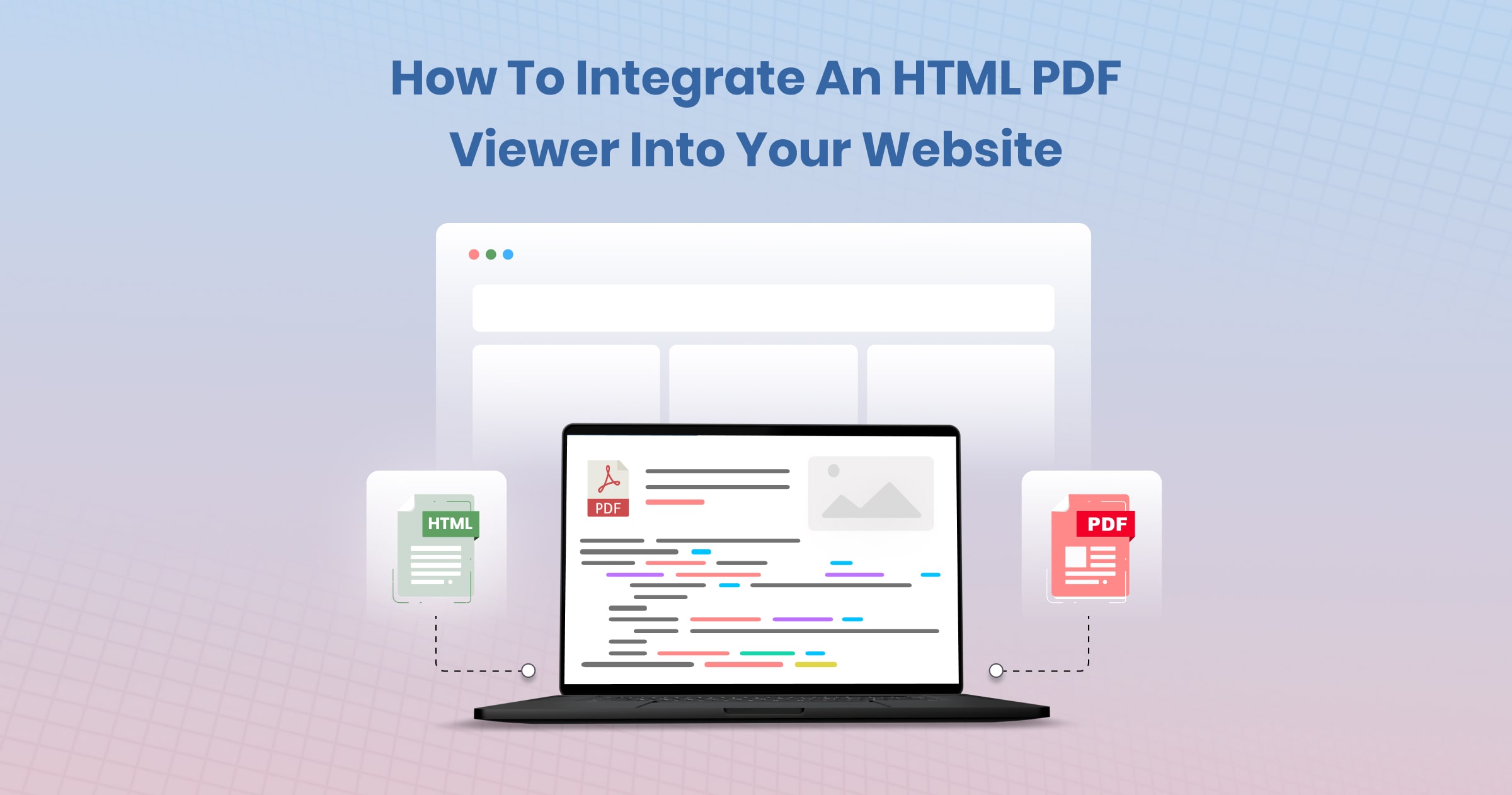How a PDF Editor SDK Can Transform Your Application Development

In the fast-paced world of software development, efficiency and user experience are key factors that determine the success of an application. One powerful tool that can help developers achieve these goals is a PDF Editor SDK (Software Development Kit).
This guide will provide you with everything you need to know about how a PDF editor SDK can revolutionize your application development process, whether you’re new to the document processing space or a seasoned developer researching capabilities across different frameworks.
What is an SDK?
 Before diving into the specifics of a PDF Editor SDK, let’s first understand what an SDK is. An SDK, or Software Development Kit, is a collection of tools, libraries, and resources that developers use to create software applications for specific platforms, operating systems, or programming languages. Think of an SDK as a toolbox that contains everything a developer needs to build, test, and deploy an application.
Before diving into the specifics of a PDF Editor SDK, let’s first understand what an SDK is. An SDK, or Software Development Kit, is a collection of tools, libraries, and resources that developers use to create software applications for specific platforms, operating systems, or programming languages. Think of an SDK as a toolbox that contains everything a developer needs to build, test, and deploy an application.
What Does an SDK Include?

An SDK typically includes:
- Libraries: Pre-written code that developers can use to perform common tasks.
- Sample Code: Examples that demonstrate how to use the libraries.
- Tools: Utilities that help developers with debugging, testing, and other tasks.
- Documentation: Guides and references that explain how to use the SDK.
A good SDK will also include multiple APIs (Application Programming Interfaces) that allow developers to interact with different aspects of the platform or system they are working with.
What is a PDF Editor SDK?
A PDF Editor SDK is a specialized software development kit designed to help developers manipulate and modify and create PDF (Portable Document Format) files within their applications. It typically includes libraries, APIs, and sample code that allow developers to add PDF functionality to their software, such as viewing, editing, signing, and annotating PDF documents.
PDF Editor SDKs are vital for developers who need to enable users to work with PDF files directly within their applications. This eliminates the need for third-party software and streamlines the document processing workflow, making it faster and more efficient.
What Problems Does a PDF Editor SDK Solve?
PDFs are a popular file format for sharing and distributing documents, but they can be challenging to edit or manipulate. Typically, users would need to download the PDF, open it in a separate application, make the necessary changes, and then upload or share the updated file. This process is cumbersome and can slow down collaboration and processing times.
A PDF Editor SDK solves this problem by allowing developers to build applications that can handle PDF files seamlessly within the existing workflow. This means users can view, edit, sign, and annotate PDFs directly within the application, without needing to switch to another program. This not only improves the user experience but also increases efficiency and productivity.
How Can a PDF Editor SDK Improve Document Processing?
A PDF Editor SDK empowers developers to create applications that can process PDFs quickly and efficiently. Here’s how:
- Seamless Integration: Users can edit, sign, and manipulate PDFs within the application without needing third-party software.
- Improved User Experience: By keeping the document processing within the same application, users have a more streamlined and intuitive experience.
- Increased Efficiency: Automating document processing tasks within the application reduces the time and effort required to complete them, leading to faster processing times.
- Enhanced Security: A PDF Editor SDK often includes features like digital signatures and encryption, which can help ensure that documents remain secure and confidential
Key Features of a PDF Editor SDK
A PDF Editor SDK offers a wide range of features that can transform the way you handle PDFs in your application. Here are some of the most important capabilities
1. Viewing PDFs:
With a PDF Editor SDK, users can view PDF documents directly within the application. This eliminates the need for external PDF viewers and allows for a more integrated experience.
2. Digital and Electronic Signatures:
A PDF Editor SDK enables users to sign documents digitally or electronically, increasing document security and ensuring the authenticity of signatures.
3. Text Search:
Users can search for specific words or phrases within a PDF, making it easier to find relevant information quickly.
4. Form Creation and Population:
Developers can use a PDF Editor SDK to create and populate forms within a PDF, allowing users to fill in and extract form data easily.
5. Collaboration:
A PDF Editor SDK facilitates collaboration by allowing multiple users to work on the same document simultaneously, adding annotations, comments, and feedback.
6. Document Comparison:
With document comparison features, users can analyze differences between two PDF files, including text, images, and other elements.
7. Annotation and Redaction:
Users can add notes, highlights, and other types of markups to a PDF. They can also redact sensitive information to ensure that it cannot be viewed or accessed by unauthorized parties.
8. Content Extraction:
A PDF Editor SDK allows developers to extract specific elements, such as text, images, or tables, from a PDF for use in other applications.
9. Encryption:
To ensure the security of PDF documents, a PDF Editor SDK can provide encryption features, allowing developers to build custom encryption algorithms or use existing ones.
10. Editing PDFs:
A PDF Editor SDK offers native PDF editing functionality, enabling users to modify text, images, and other elements within a PDF document.
Key Considerations When Choosing a PDF Editor SDK
When you’re ready to add PDF functionality to your application, it’s essential to choose the right PDF Editor SDK. Here are some key factors to consider:
1. Security and Compliance:
Ensure that the PDF Editor SDK is designed with security in mind and provides features like encryption and digital signatures to protect sensitive documents.
2. Programming Language:
A quality PDF Editor SDK should support a wide range of programming languages, allowing developers flexibility based on their project needs. Whether you’re developing in JavaScript, Python, C#, or another language, ensure the SDK integrates well into your chosen stack.
3. Framework Variety:
The SDK should support a wide range of frameworks, such as React, Vue, and Angular, allowing developers to build applications from a single codebase.
4. Customizable UI:
A PDF Editor SDK should offer a fully customizable UI, allowing developers to tailor the look and feel of the PDF viewer to match the rest of the application.
5. Comprehensive Documentation:
Access to thorough documentation, including getting started guides, reference materials, and tutorials, is crucial for a smooth development process.
Benefits of Using a PDF Editor SDK
Using a PDF Editor SDK can bring numerous benefits to both developers and end-users:
1. Improved Productivity:
A PDF Editor SDK saves developers time and effort by providing pre-built tools and functionalities for working with PDF files. This allows them to focus on building the core features of their application.
2. Faster Time to Market:
With increased productivity, developers can bring products to market faster, giving their company a competitive edge.
3. Platform Independence:
A PDF Editor SDK ensures that your application can handle PDFs consistently across different platforms, reducing compatibility issues.
4. Enhanced Functionality:
By continuously improving their PDF Editor SDKs, developers can offer advanced features and capabilities to their users without needing to invest in additional research and development.
5. Better Security:
PDF Editor SDKs often include advanced security features such as password protection, encryption, and digital signatures, ensuring that sensitive documents remain secure and confidential.
6. Reduced Maintenance and Churn:
A well-tested and proven PDF Editor SDK reduces the risk of downtime and customer dissatisfaction, ultimately leading to lower churn rates.
Industries That Can Benefit from a PDF Editor SDK
A PDF Editor SDK can provide immense value to a wide range of industries by streamlining document processing workflows and enhancing security. Here are some examples:
1. Financial Services:
Financial institutions can use a PDF Editor SDK to accelerate digital transformation by integrating document processing capabilities into their existing workflows, reducing errors, and improving compliance with regulatory standards.
2. Healthcare:
A PDF Editor SDK can help healthcare organizations manage patient data more securely and efficiently by enabling features like digital signatures and encryption, ensuring compliance with regulations like HIPAA.
3. Government:
Government agencies can modernize their document workflows by adopting a PDF Editor SDK, allowing them to create, share, and edit read-only PDF documents securely and efficiently.
4. Legal:
Law firms can benefit from a PDF Editor SDK by streamlining the management of legal documents, enabling features like redaction, annotation, and advanced search capabilities.
5. Construction and Architecture:
A PDF Editor SDK can help construction and architecture firms collaborate more effectively by allowing them to share, edit, and annotate blueprints and other construction documents.
6. Pharmaceuticals:
Pharma and life sciences companies can use a PDF Editor SDK to manage clinical trial data more efficiently, enabling features like form filling, data extraction, and automated redaction.
Client-Side vs. Server-Side PDF Editor SDKs
PDF Editor SDKs can be categorized into two types: client-side and server-side.
Client-Side PDF Editor SDK:
A client-side PDF Editor SDK runs on a user’s computer or device and provides tools for viewing, editing, and creating PDF documents locally. It is typically used for applications that require a user-friendly interface for working with PDF files.
Server-Side PDF Editor SDK:
A server-side PDF Editor SDK runs on a server and provides tools for processing PDF documents programmatically. It is often used for automating tasks such as converting large volumes of PDF files, merging or splitting PDFs, and adding watermarks or applying digital signatures.
The choice between a client-side and server-side PDF Editor SDK depends on the project’s specific requirements, including the volume of documents, the level of automation needed, and available resources. Both types offer unique benefits and can be used together to optimize PDF document workflows.
Choosing Between Closed-Source and Open-Source PDF Editor SDKs
When deciding on a solution for managing PDF documents, the choice between closed-source and open-source PDF Editor SDKs can hinge on several important factors:
Ownership and Licensing:
Open-source libraries are typically free and maintained by a community of developers, offering the flexibility of modification and distribution. In contrast, closed-source PDF Editor SDKs often require licensing fees but provide exclusive features and enhancements not available in their free counterparts.
Functionality:
While open-source libraries can handle basic PDF tasks like creation and viewing, closed-source SDKs often include more sophisticated functionalities such as digital signatures, redaction, and advanced document security, which may be essential for more complex requirements.
Support and Reliability:
Support for open-source libraries is driven by the community, which can vary in responsiveness and expertise. Closed-source SDKs generally offer more dependable customer support, backed by formal service level agreements and professional assistance, ensuring a more stable and reliable solution for businesses requiring guaranteed support.
Getting Started with a PDF Editor SDK
Ready to get started with a PDF Editor SDK? Here’s what you can do:
1. Explore Available Options: Research different PDF Editor SDKs to find one that meets your needs in terms of features, platform support, and pricing.
2. Sign Up for a Free Trial: Many PDF Editor SDK providers offer free trials, allowing you to test the software and see if it fits your requirements.
3. Review Documentation: Make sure the PDF editor SDK you choose has comprehensive documentation to guide you through the development process.
4. Consult with Solution Engineers: If you need more tailored advice, consider scheduling a consultation with a solution engineer who can help you understand how the PDF Editor SDK can integrate with your application.
5. Implement and Test: Once you’ve selected a PDF editor SDK, start implementing it in your application and test it thoroughly to ensure it meets your needs.
6. Gather Feedback: After deploying your application, gather feedback from users to see how the PDF functionality is being used and if there are any areas for improvement.
By incorporating a PDF editor SDK into your application development process, you can create more powerful, user-friendly, and secure software that meets the needs of your users and sets your product apart from the competition.
Summary:
In summary, adding a PDF Editor SDK to your application can improve its functionality and user experience by making document workflows smoother and reducing the need for external tools. The SDK’s features, such as easy PDF editing, better security with digital signatures, and efficient handling of content, offer great benefits to sectors like finance, healthcare, and legal.
choosing the right PDF Editor SDK, you not only make development more efficient but also ensure your product is secure and easy to use, helping it stand out in a competitive market.
Ready to streamline your document management and boost user satisfaction? Explore our PDF manipulation library today and see how they can simplify your workflows and enhance security. Take the first step towards more efficient operations—contact us to learn more!




